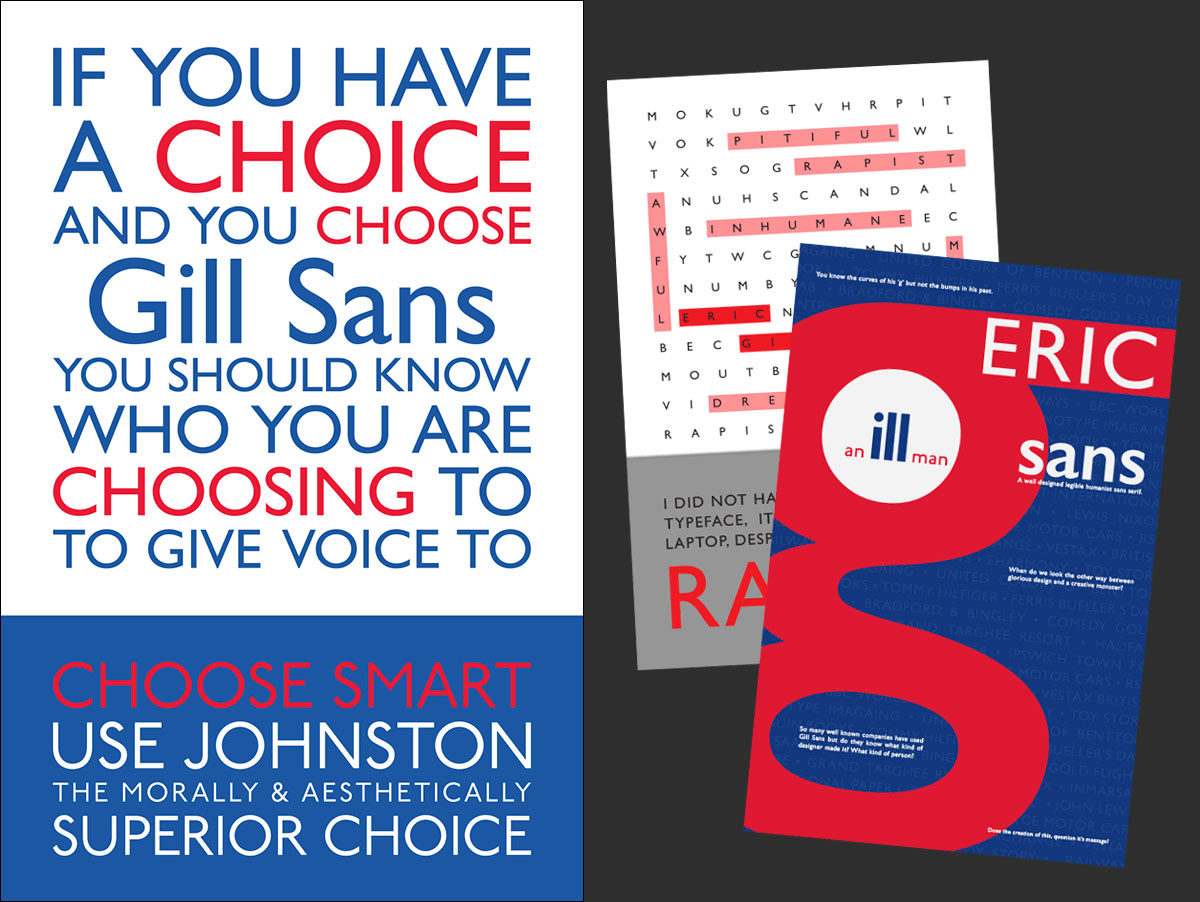Dave Gottwald
Assistant Professor
University of Idaho
When I was in graduate school, it was occasionally remarked that widely revered English artist Eric Gill was “a bit odd.” However, it was not until I had to prep a new History of Typography course that I realized this was a euphemism for “monster.” I knew that his eponymous san serif is essentially the Helvetica of the UK—you can find everywhere from British Rail and the BBC to the Church of England and many children’s books. Gill Sans is the face that advises all to KEEP CALM AND CARRY ON.
The truth is that Eric Gill molested two of his daughters from their teen years onward. He exposed himself to children and to women who worked for him. He maintained a sexual relationship with his sister for most of his life, and he even had carnal relations with the family dog. We know this from Gill’s own journals, which were brought to light in a definitive biography published in 1989. Yet in the two design history texts assigned for my course, one is completely silent about Gill’s crimes, and the other glosses over it.
I believe we have a responsibility as educators to provide young people with honest information so that they are empowered to make choices that reflect their values. Even though I teach at a rural campus in a conservative area, my students were more prepared to hear and talk about Gill’s crimes than I had anticipated. I will present a case study outlining the material presented, including highlights from our lively discussion about what responsibility one has in using a typeface. I will share the posters they designed about the subject, and quote from their written responses—both about Eric Gill and his typefaces, and their assessment of how I delivered the material.
This research was presented at the Design Incubation Colloquium 4.4: Parsons Integrated Design on Thursday, June 14, 2018.
